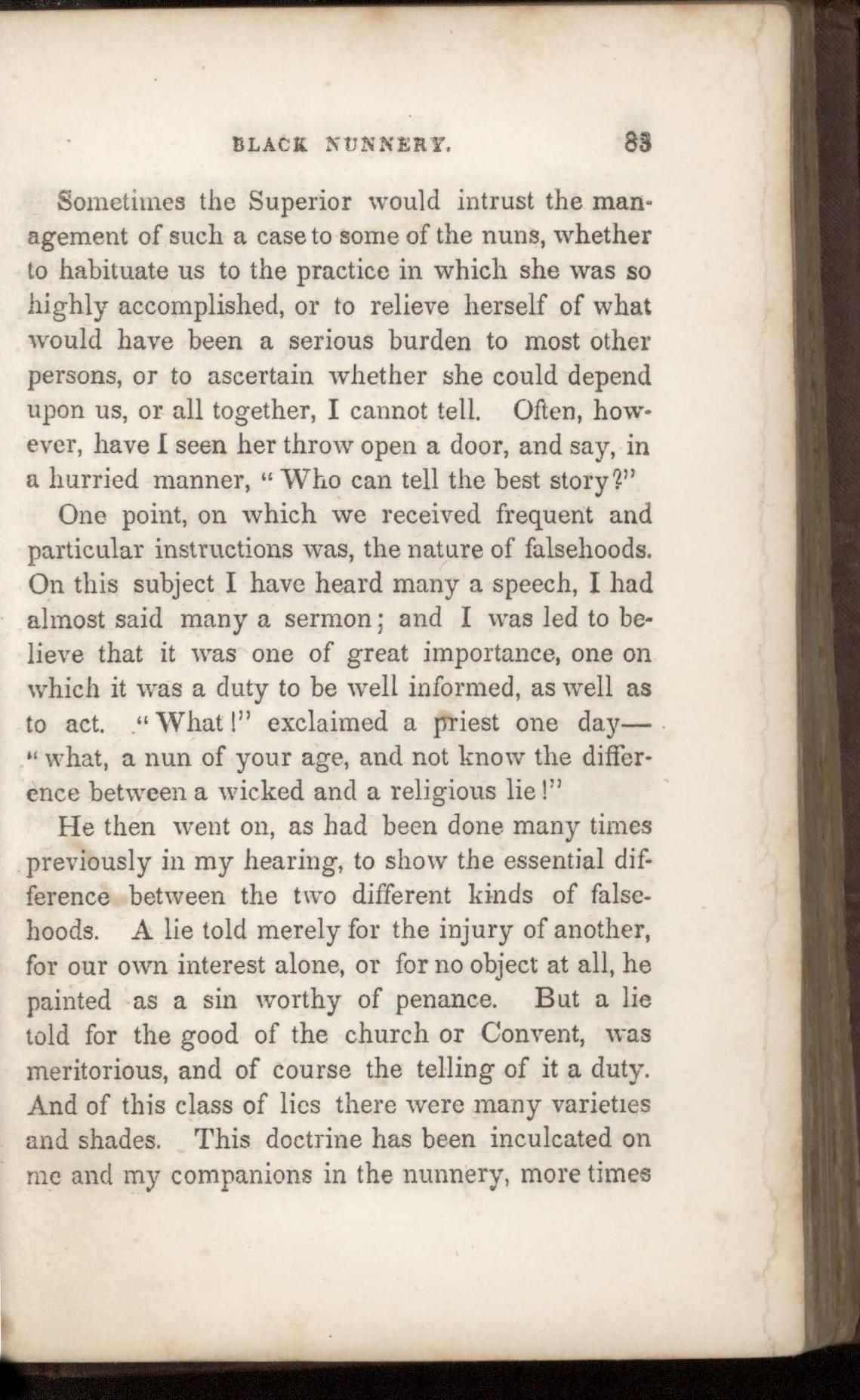

Sometimes the Superior would intrust the management of such a case to some of the nuns, whether to habituate us to the practice in which she was so highly accomplished, or to relieve herself of what would have been a serious burden to most other persons, or to ascertain whether she could depend upon us, or all together, I cannot tell. Often, however, have I seen her throw open a door, and say, in a hurried manner, "Who can tell the best story?"
One point, on which we received frequent and particular instructions was, the nature of falsehoods. On this subject I have heard many a speech, I had almost said many a sermon; and I was led to believe that it was one of great importance, one on which it was a duty to be well informed, as well as to act. "What!" exclaimed a priest one day—"what, a nun of your age, and not know the difference between a wicked and a religious lie!"
He then went on, as had been done many times previously in my hearing, to show the essential difference between the two different kinds of falsehoods. A lie told merely for the injury of another, for our own interest alone, or for no object at all, he painted as a sin worthy of penance. But a lie told for the good of the church or Convent, was meritorious, and of course the telling of it a duty. And of this class of lies there were many varieties and shades. This doctrine has been inculcated on me and my companions in the nunnery, more times
